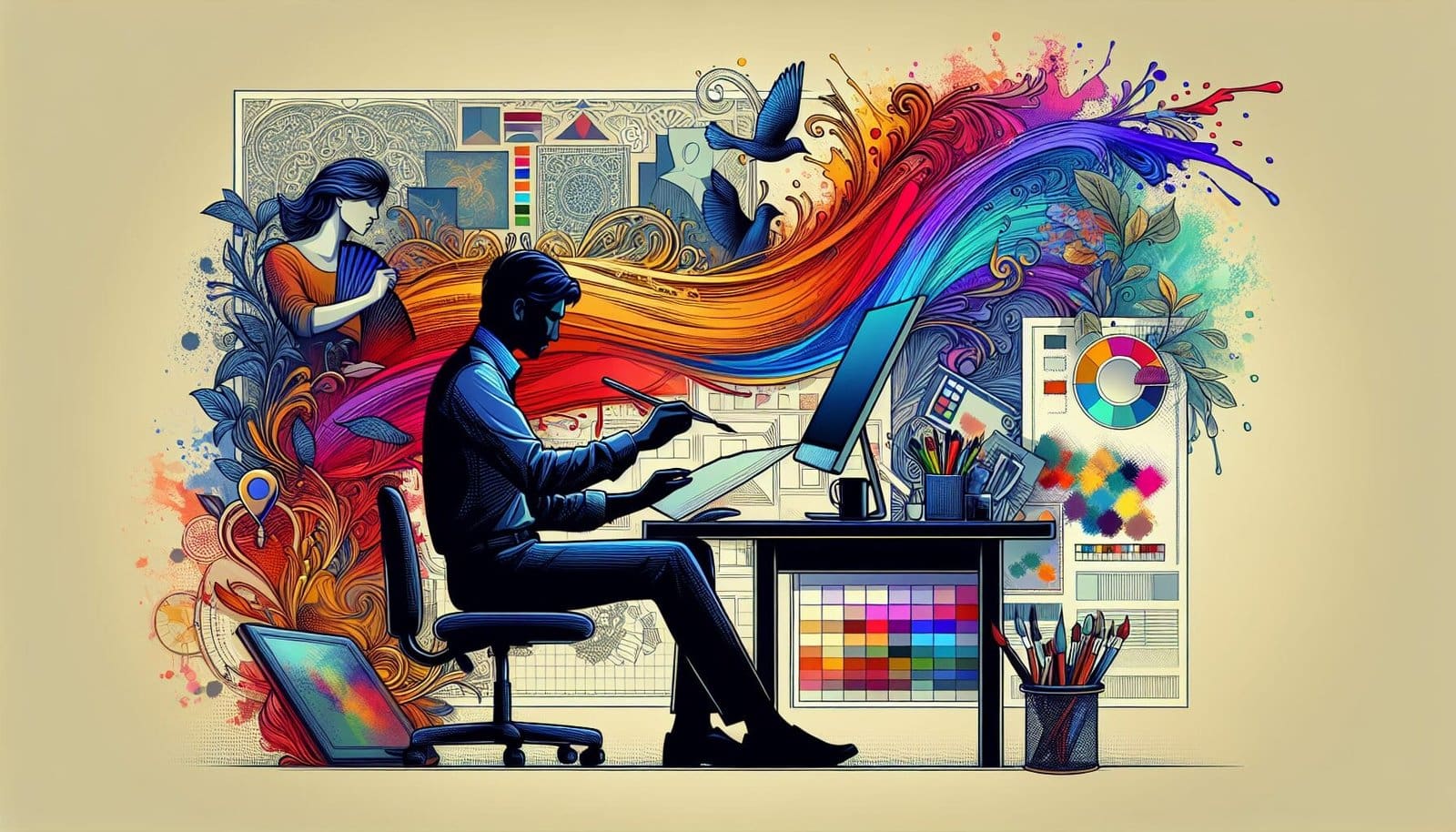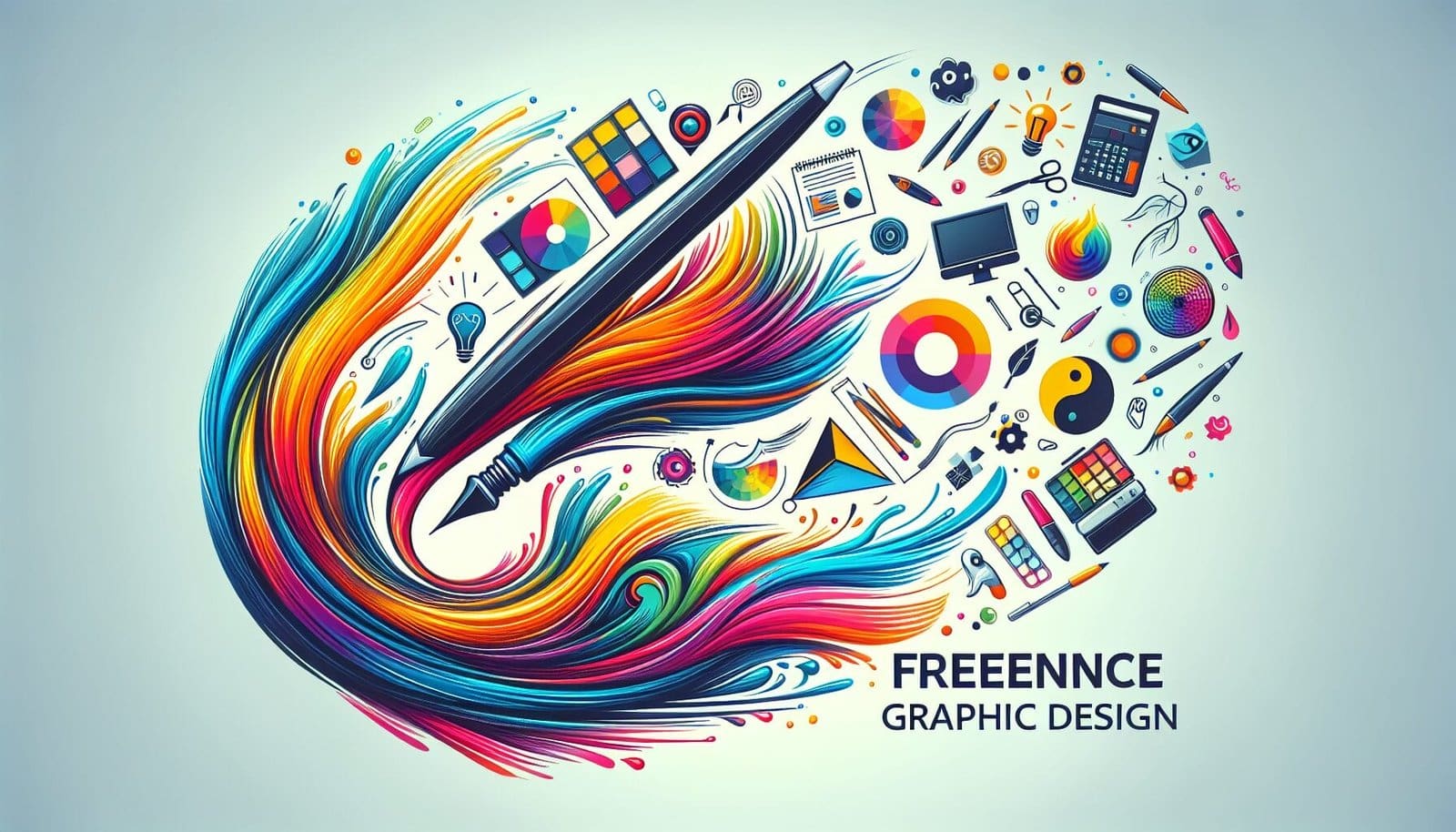Are you a freelance graphic designer looking to take your projects to the next level? Look no further! In this article, we will share essential tips and tricks that will help you achieve success in your freelance graphic design projects. From mastering effective communication with clients to utilizing the latest design tools and techniques, these insights will equip you to create high-paying projects and establish long-term relationships with satisfied clients. So, whether you are just starting out or have years of experience, get ready to elevate your freelance graphic design game with our expert tips.

Understanding the Client's Needs
As freelance graphic designers, one of our primary responsibilities is to understand the needs and expectations of our clients. This starts with conducting a thorough client briefing, where we gather all the necessary information about their project. We ask questions to gain an in-depth understanding of their vision and objectives.
Once we have gathered all the information, we establish clear project objectives. These objectives serve as the foundation for our design process and help us stay focused on meeting the client's goals. We ensure that the objectives are specific, measurable, achievable, relevant, and time-bound (SMART).
Identifying the target audience and desired message is also critical in effective graphic design. By understanding who the design is intended for and what message the client wants to convey, we can tailor our designs to resonate with the target audience. This includes considering factors such as demographics, psychographics, and the client's brand personality.
In addition to understanding the client's needs, we also take into account their brand guidelines and style preferences. These guidelines serve as a roadmap for maintaining consistency with the client's existing brand identity. By adhering to these guidelines, we ensure that our designs align with the client's brand image and effectively communicate their message.
Effective Communication
Clear and effective communication is essential in freelance graphic design projects. We believe in keeping the lines of communication open and professional throughout the entire process. This means promptly responding to client queries, clarifying any design brief uncertainties, and seeking feedback regularly.
To ensure that we fully understand the client's vision, we proactively ask clarifying questions. This allows for clear communication and helps us avoid any misunderstandings. We value our clients' opinions and input, and by actively seeking feedback, we ensure that our designs meet their expectations and requirements.
Providing regular progress updates is another crucial aspect of effective communication. We believe in keeping our clients informed about the status of the project, including any challenges or milestones we encounter along the way. By maintaining transparency and regular communication, we build trust and confidence with our clients.
Collaboration is key when working on graphic design projects. We actively involve our clients in decision-making processes, seeking their input and involving them in design choices. By collaborating, we ensure that the final design aligns with the client's vision and expectations.
Time Management and Planning
To ensure the successful completion of freelance graphic design projects, effective time management and planning are essential. We start by setting realistic project timelines and deadlines. By accurately estimating the time required for each task, we create a timeline that allows for efficient progression of the project.
Breaking down the project into manageable tasks helps us stay organized and on track. By dividing the project into smaller, more achievable goals, we can focus on one task at a time and prevent overwhelm. This also helps us provide our clients with realistic expectations regarding project milestones.
Creating a detailed project plan and schedule is crucial for effective time management. We outline the tasks, deliverables, and deadlines, ensuring that all aspects of the project are accounted for. This plan serves as a roadmap, guiding us through the project and helping us stay on track.
However, we understand that unforeseen circumstances may arise during a project. That's why it's essential to consider potential contingencies and allocate buffer time. By allowing room for unexpected challenges, we can handle them without compromising the quality or timeline of the project.
Building a Strong Portfolio
A strong portfolio is a cornerstone of a successful freelance graphic design career. It showcases our skills and capabilities to potential clients, helping us secure high-paying projects. To build a strong portfolio, we follow a few key strategies.
First, we ensure that our portfolio displays a diverse range of graphic design skills. This demonstrates our ability to adapt to various design styles and project requirements. Whether it's logo design, packaging design, or web design, we highlight our proficiency in different areas to attract a wide range of clients.
Highlighting successful projects and including client testimonials is another effective strategy. By showcasing our past work and including positive feedback from satisfied clients, we build credibility and trust with potential clients. This allows them to see our track record of delivering exceptional results.
Regularly updating and curating our portfolio is essential to staying relevant and appealing to potential clients. We include our latest projects, removing outdated or less representative work. By presenting our best and most recent designs, we demonstrate our growth as designers and maintain a fresh and engaging portfolio.
Finally, tailoring our portfolio to appeal to the target market is crucial. We carefully curate our portfolio content, selecting designs that resonate with the industries and target audiences we want to attract. By showcasing relevant and industry-specific work, we position ourselves as experts in those areas.

Effective Client Relationship Management
Building strong client relationships is vital for freelance graphic designers. By establishing trust and rapport with our clients, we foster a positive working dynamic and increase the likelihood of repeat business. Here are some ways we focus on effective client relationship management.
We listen actively to our clients' feedback and incorporate it into our design process. By valuing their opinions and suggestions, we show that their input matters to us. Feedback helps us refine our designs and align them with the client's vision, resulting in a successful and satisfying end product.
Addressing conflicts or issues promptly and professionally is crucial for maintaining healthy client relationships. If any conflicts or misunderstandings arise, we approach them with a calm and solution-oriented mindset. By addressing and resolving conflicts in a timely manner, we minimize disruptions to the project and maintain client satisfaction.
Maintaining long-term relationships with clients is a key focus for us. We strive to exceed our clients' expectations and provide outstanding service throughout the entire project. By delivering exceptional results and demonstrating our commitment to their success, we foster long-term partnerships that benefit both parties.
Adapting to Evolving Design Trends
As freelance graphic designers, it's essential to stay up-to-date with industry news and design trends. By continuously evolving our skills and adapting to changes in the design landscape, we remain competitive and relevant. Here's how we stay on top of evolving design trends.
We actively engage with industry publications, blogs, and social media channels to stay informed about the latest design trends. This allows us to identify emerging styles, techniques, and technologies that we can incorporate into our work. Being aware of current design trends helps us create designs that resonate with our clients' target audience.
Experimentation is key to staying ahead of the curve. We try new techniques and styles in our design projects, pushing the boundaries of our creativity. By embracing experimentation, we can develop a unique design style that sets us apart from other designers.
Understanding the relevance of current design trends is essential. Not every trend will be suitable for every project or client. We carefully assess the appropriateness of design trends, considering factors such as the target audience, the purpose of the design, and the client's brand identity. This ensures that our designs are both current and aligned with the client's goals.
Balancing contemporary design with timeless elements is also crucial. While staying current is important, we also value the longevity of our designs. By incorporating timeless elements, we create designs that have a lasting impact and can withstand changing trends.
Attention to Detail
Attention to detail is a hallmark of successful freelance graphic designers. We understand the importance of delivering polished and professional designs. Here are some ways we pay attention to detail in our work.
First, we double-check for spelling and grammatical errors. These mistakes can undermine the credibility and effectiveness of a design. By meticulously proofreading our work, we ensure that the content is error-free and conveys the intended message accurately.
Ensuring alignment and consistency in design elements is another aspect of attention to detail. We carefully align text, images, and other design elements to create a visually harmonious composition. Consistency across all design elements, such as color choices and typography, creates a cohesive and polished visual identity.
Optimizing file formats and sizes for various platforms is crucial in today's digital landscape. We pay close attention to the technical requirements of different platforms, ensuring that our designs are delivered in formats that are compatible and optimized for their intended use. This ensures that our clients can easily access and use the design files.
Paying close attention to typography and color choices is essential in graphic design. Typography sets the tone and enhances readability, while color choices evoke specific emotions and create visual interest. We carefully select fonts and colors that align with the client's brand guidelines and visually communicate the desired message.
Delivering High-Quality Work
Delivering high-quality work is at the core of our freelance graphic design practice. We prioritize craftsmanship and strive to exceed our clients' expectations. Here are some key principles we follow to ensure the quality of our work.
Maintaining a high standard of craftsmanship is non-negotiable for us. We pay attention to even the smallest details, ensuring that every aspect of the design is meticulously executed. By striving for excellence in our work, we demonstrate our commitment to delivering exceptional results.
While efficiency is important, we prioritize quality over speed. Rushing through a project can compromise the final outcome. We take the time to thoroughly plan, design, and review our work to ensure that it meets the highest standards of quality.
Conducting thorough quality assurance and proofreading is an essential step in our design process. We meticulously review our designs, checking for any errors or inconsistencies. This includes reviewing content, layout, typography, and colors. Thorough quality assurance ensures that our designs are error-free and visually appealing.
Providing deliverables in multiple formats is important in today's multifaceted design landscape. We take into account the platforms and mediums on which our designs will be used. By delivering designs in various formats, we ensure that our clients have the flexibility to use them across different channels and platforms.
Effective Pricing Strategies
Determining fair and competitive rates is crucial for freelance graphic designers. We consider multiple factors when determining our pricing strategies to ensure that our rates align with the value we provide. Here's our approach to effective pricing.
We consider the complexity, scope, and duration of each project when determining our rates. More complex projects with a broader scope and longer duration typically require a higher investment of time and effort. We factor in these considerations to arrive at a fair and competitive rate.
Setting clear payment terms and expectations upfront is essential for a smooth and transparent working relationship. We clearly communicate our payment terms, including the number and frequency of installments, accepted payment methods, and any late payment penalties. This ensures that both parties are on the same page regarding financial expectations.
Offering flexible pricing options or packages can be beneficial for both us and our clients. By providing various pricing options tailored to different client needs, we can accommodate a broader range of budgets. This allows us to attract clients at different stages of their business growth while maintaining our profitability.
Continuous Professional Development
Continuous professional development is essential for freelance graphic designers to stay relevant and competitive in the industry. Here are some strategies we employ to consistently improve our skills.
Participating in relevant design workshops and courses allows us to learn new techniques, sharpen our skills, and stay updated with industry best practices. By investing in our professional development, we enhance our ability to deliver exceptional designs and offer valuable services to our clients.
Engaging in online design communities and forums is valuable for networking and knowledge sharing. By connecting with other designers, we can exchange ideas, seek advice, and gain insights into emerging trends or industry challenges. Online communities also provide a platform for showcasing our work and attracting potential clients.
Seeking feedback and constructive criticism from peers is an important aspect of professional growth. By actively seeking input from other designers, we gain valuable perspectives that help us refine our skills and approaches. Constructive criticism allows us to identify areas for improvement and refine our design process.
Readily adapting to new design tools and software is crucial in a rapidly evolving industry. We stay updated with the latest design tools and software, embracing new technologies that can enhance our workflow and expand our capabilities. By incorporating new tools and software, we stay efficient, adaptable, and competitive in the market.
In conclusion, successful freelance graphic design projects require a thorough understanding of the client's needs, effective communication, strong time management and planning, a compelling portfolio, effective client relationship management, adaptation to evolving design trends, attention to detail, the delivery of high-quality work, effective pricing strategies, and continuous professional development. By incorporating these strategies into our work, we can achieve success in freelance graphic design and attract high-paying projects.





